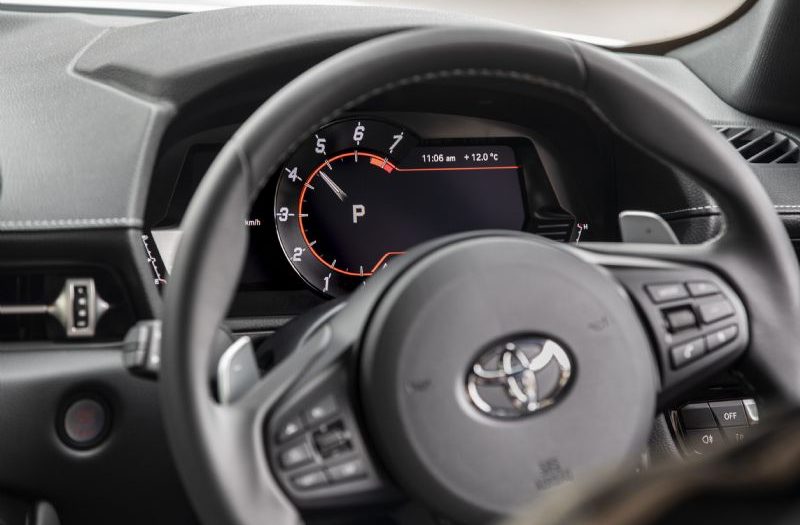We’re sorry to say that many readers missed Toyota’s Big Fat Festive Quiz (or had a lot of trouble finding it). So we’ve taken down all the questions and the answers follow. If you haven’t done the quiz yet, see how you go.
Here are the questions posed to Ellie Cole, Harry Bates and Adam Goodes in Toyota’s Big Fat Festive Quiz.
The celebrities didn’t do too well: Adam and Harry scored two right out of five, and Ellie topped them both by scoring three right.
The general public results will be published next week.
Q1. What is the most common type of motor vehicle crash?
- Head on
- Side on
- Rear end
Q2. Talking on a mobile phone draws away approximately what percentage of brain resources associated with driving?
- 15%
- 25%
- 40%
Q3. Even if you don’t feel tired, what is the recommended time period you should drive before stopping for a break?
- 1 hour
- 2 hours
- 3 hours
Q4. Is your pet allowed to sit on your lap whilst driving?
- Only in 50km/h or less zones
- Only if it is in your seat belt
- No
Q5. Who served up figgy pudding in Dickens’ A Christmas Carol?
- Mrs Cratchit
- Mr Allenby
- Sir Griggins
- Dr Ruff
Q6. Statistically, who are the safest drives on the road?
- Learners
- Provisional Drivers
- Full Licence Holders
Q7. Driving over 60km/h, how much space should you leave when passing a cyclist?
- 0.5 metres
- 1.0 metre
- 1.5 metres
Q8. How long can it take a fully loaded freight train to stop after applying the emergency brakes?
- 500m
- 750m
- 1.5km
- 2km
Q9. Local Toyota dealers often support Road Safety Education’s RYDA program by providing vehicles. How many RYDA venues are there in Australia?
- 10
- 40
- 70
- 110
Q10. The Christmas classic, Home Alone 2, features a cameo by which of the following people?
- George Bush
- Donald Trump
- Jennifer Aniston
- Michael Jordan
Q11. Seat belts save lives – Victoria was the first state in the world to make their use compulsory – in what year?
- 1965
- 1970
- 1975
- 1980
Q12. Toyota has supported Road Safety Education’s RYDA program since 2010. Since then, how many students have taken part in the program?
- 25,000
- 30,000
- 120,000
- 400,000
Q13. What is the reaction time for an average driver?
- 0.5 seconds
- 1 second
- 1.5 seconds
Q14. If you double your speed your braking distance (from the time the brakes are applied) will:
- Stay the same
- Double
- Triple
- Quadruple
Q15. In the song “Frosty the Snowman”. What made Frosty come to life?
- An old silk hat
- A Christmas bauble
- A golden buckle
- A diamond ring
Toyota will be releasing the results of its quiz early next week, and we’ll supply you with a link so you can see how you did against everyone else.
In the meantime, here are the correct answers:
Q1. 3
Road Safety Education says, count to three. This is the amount of space RYDA recommends between you and your fellow road user to allow enough time for a sudden stop.
Q2. 3
RSE says, spatial sense, navigation and peripheral vision don’t work well while you’re chatting away. The safest thing to do is put your phone in the glovebox and call them back when you’ve stopped driving.
Q3. 2
RSE says, it’s simple. Drivers that are asleep can’t brake which is why fatigue related crashes are twice as likely to be fatal. Don’t wait until you’re weary – break for braking’s sake.
Q4. 3
Q5. 1
Q6. 1
According to the RSE, when there is an instructor or devoted parent, two sets of eyes on the road are always better than one. And with a heightened focus on nailing the skill of driving, distractions are eliminated and road rules are obeyed.
Q7. 3
RSE says “sharing is caring” and with cyclists being one of the most vulnerable groups on the road, your generosity will save lives.
Q8. 4
RSE says, sometimes weighing in excess of 10,000 tonnes and stretching up to 2.5km in length, Australian freight trains mean business and always have right of way. Always approach with caution.
Q9. 3
RYDA is a road safety program designed to change the way young drivers and passengers think about road safety.
Q10. 2
Q11. 2
RSE says: strap in, because in a crash if you’re unrestrained your body will keep travelling at the same speed as the car until it hits something.
Q12. 4
RSE says, designed for 16 to 18-year-olds across Australia and New Zealand, the learning outcomes of the RYDA program include identifying crash factors, developing personal strategies for reducing risk and recognising protective measures.
Q13. 3
RSE says, 1.5 seconds is the average, but a huge range of factors such as age, fatigue and alcohol can affect this. Driving deserves the best version of you so avoid any factors that can affect reaction time.
Q14. 4
RSE says speed creep isn’t a wise move. Braking distance grows exponentially with speed – the smallest increase can have a huge impact on coming to a complete stop.
Q15. 1
